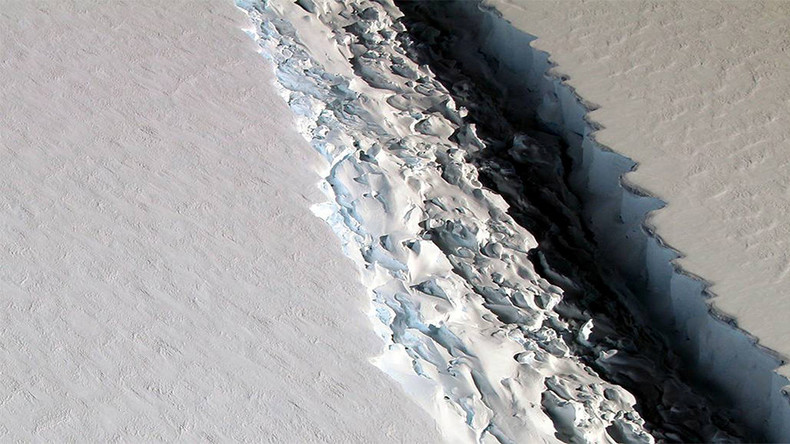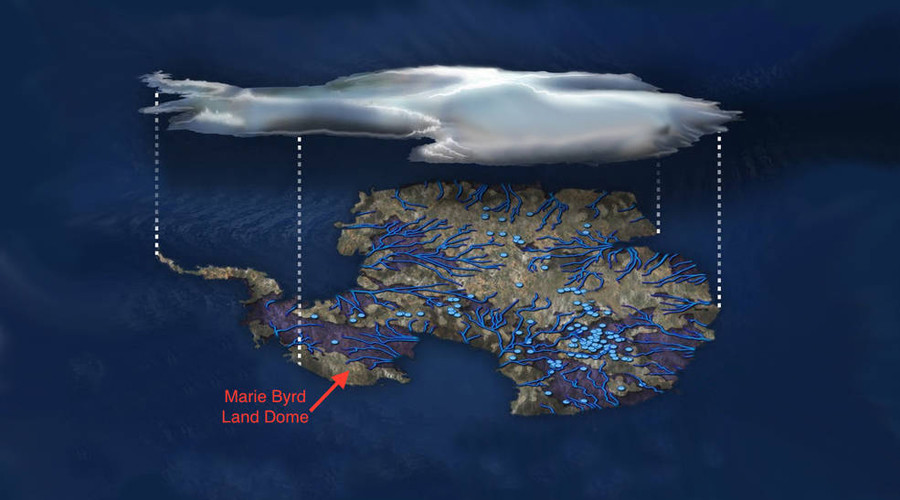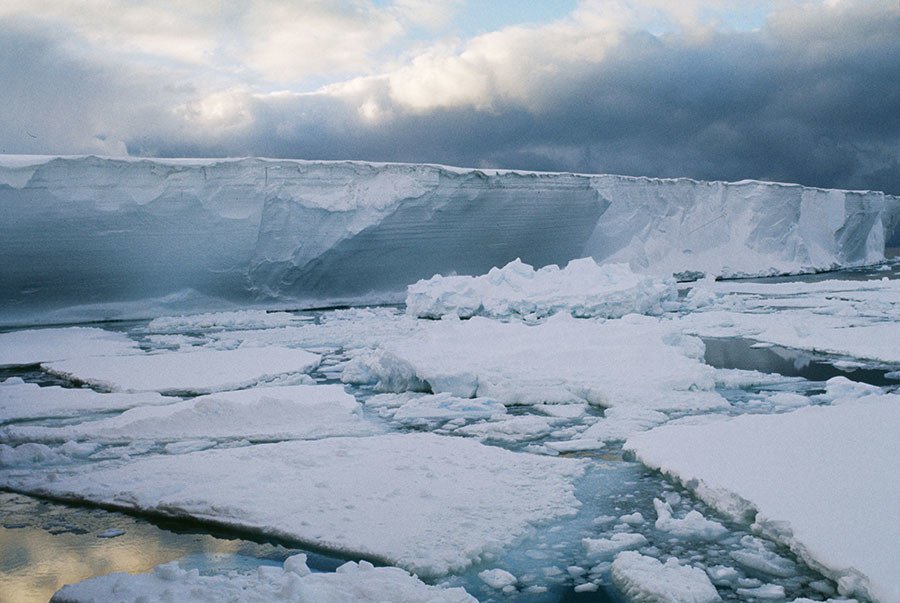'This is crazy': Antarctic supervolcano melting ice sheet from within

Oblique
view of massive rift in Antarctic Peninsula's Larsen C ice shelf on
Nov 10, 2016. Courtesy John Sonntag/NASA/Handout / Reuters
RT,
9
November, 2017
Scientists
at NASA’s Jet Propulsion Laboratory (JPL) have found new evidence
to support a theory that the breakup of Antarctic ice may be caused
in part by a massive geothermal heat source, with output close to the
scale of Yellowstone National Park.
A
geothermal heat source called a mantle plume – a hot stream of
subterranean molten rock that rises through the Earth's crust – may
explain the breathing effect visible on Antarctica's Marie Byrd Land
and elsewhere along the massive ice sheet.
While
the mantle plume is not a new discovery, the recent research
indicates it may explain why the ice sheet collapsed in a previous
era of rapid climate change 11,000 years ago and why the sheet is
breaking up so quickly now.
"I
thought it was crazy. I didn't see how we could have that amount of
heat and still have ice on top of it," said Hélène
Seroussi of NASA's Jet Propulsion Laboratory in Pasadena, California.
Seroussi
and Erik Ivins of JPL used the Ice
Sheet System Model (ISSM),
a mathematical depiction of the physics of ice sheets developed by
scientists at JPL and the University of California, Irvine. Seroussi
then tweaked the ISSM to hunt for natural heat sources as well as
meltwater deposits.
This
warm water lubricates the ice sheet from below, allowing glaciers to
slide off into the sea. Studying meltwater in western Antarctica may
allow scientists to estimate how much ice will be lost in future.

©
Zina Deretsky / NSF / NASA
The
Antarctic's underwater systems of lakes and rivers fill and drain
rapidly which can force surface ice to rise or fall by as much as 6
meters (20ft). The average thickness of the ice is 2.6km (1.6
miles) but can reach 4.7km in parts of the sheet. This motion allows
scientists to better understand the underground topography and better
estimate concentrations of water sources beneath the surface.
The
JPL scientists corroborated their work with readings from NASA's
IceSat satellite and airborne Operation IceBridge campaign which
observe variations in the altitude of the Antarctic ice sheet's
surface. The team found that the geothermal heat emitted by the
Antarctic mantle plume is up to 150 milliwatts per square meter. For
comparison, over the entirety of Yellowstone National Park the
underground heat measures an average of 200 milliwatts per square
meter.
Scientists to study 120,000yo ecosystem uncovered after 1tn-ton iceberg break (PHOTOS) https://on.rt.com/8pho
During
their initial work, Seroussi and Ivins created simulations using
higher heat flows than 150 milliwatts per square meter, which did not
align with their space-based readings, except for one area: The Ross
Sea.
Their
calculations showed that, in certain sections of the sea, a heat flow
of at least 150-180 milliwatts was required to create sufficient
meltwater flows that matched with observations. They now believe the
mantle plume is responsible for these higher-than-average readings.
The
Marie Byrd Land mantle plume formed 50 to 110 million years ago,
predating the Western Antarctic ice sheet. The mantle plume theory
was initially proposed 30 years ago but other, competing theories
suggested the sheer weight of the ice sheets causes melting deep
below the surface.

No comments:
Post a Comment
Note: only a member of this blog may post a comment.